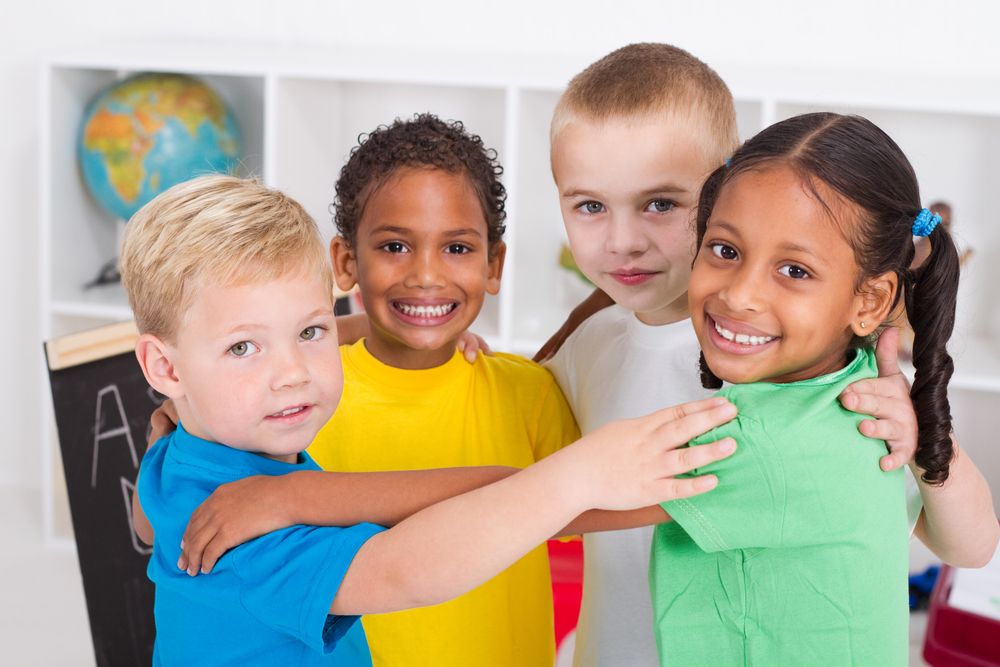The anti-bias approach in early childhood education
Published on Tuesday, 16 April 2019
Last updated on Tuesday, 31 December 2019

Anti bias education is an approach to teaching designed to increase understanding of differences and their value to a respectful and civil society, and to actively challenge bias, stereotyping and all forms of discrimination.
In early childhood settings, this means development of an inclusive play-based learning curriculum which reflects and celebrates diverse experiences, perspectives, and teaching practices to advance the learning of all children in a respectful and inclusive fashion.
The founding principle of anti-bias education is that bias is learned and that this learning starts from the earliest days of life, when children start to receive messages about their own identity and the identities of others. This learning may be explicit or subtle, and picked up unconsciously from family, friends and the media, but it can have a significant and lasting impact on a person's self-image and world view as well as their view of others.
In environments where diversity and difference is not valued and where children aren't given appropriate guidance, these behaviours can lead to hurtful practices such as exclusion, bullying and name-calling. Indicators of bias in young children may include refusal to co-operate with others, discouraging and/or excluding the involvement of others and making and acting on assumptions about people and groups.
Therefore, the goals of anti-bias approach in early childhood settings include:
- Developing children's self-awareness, confidence, identity, pride and self esteem
- Helping children feel comfortable and accepting of difference
- Creating awareness of bias and stereotypes and helping children develop the language to describe and understand bias
- Providing children with the tools and power to respond appropriately to bias
According to information from Bicultural Inclusion Services for early childhood educators working with children in a setting which identifies with the anti-bias approach it's helpful to keep the following guiding principles in mind and not make any assumptions about a child's experiences, world view, or background:
- Even very young children notice differences and begin to discriminate based on these differences
- It's okay for children to notice differences - the problem is the way society views some differences as positive and others as negative, as children absorb and act on these attitudes
- We do not experience bias in the same way
- Any anti-bias approach is important for everyone
- Adults are not always aware of their biases and may model bias unintentionally
- Understanding bias and inequality is a long-term process
- It is important to create inclusive environments which encourage participation and where it is okay to disagree
- It's important to integrate anti-bias in all parts of the early education and care environment
With these principles in mind here are some simple ideas for implementing anti-bias practice in your early childhood setting:
Talk about your own experiences
Begin with yourself, tell a story of when you were discriminated against, how you felt, how you resolved the issue, and invite the children to make comments. You can guide children to imagine how they would have felt in such a situation, how they would have responded, what they would have expected the outcome to be.
Help put rejection in perspective
Prompt children to recall times when they were angry with parents, friends, or siblings - how were these situations resolved?
Shed some light on social dynamics
Acknowledge that people are often judged by the way they look, act, or dress.
Explore why that is, what impact it may have on an individual's feelings and behaviour, and identify strategies that support the development of genuine relationships.
Find examples that children can relate to
Many books, TV shows, and movies portray outsiders triumphing in the face of rejection and send strong messages about the importance of being true to your own nature and of the value of being authentic, even in the face of difficult social situations.
Foster friendships in a variety of settings
Introduce the children in your care and education setting to any activity that gives them an opportunity to create another social group and learn new skills.
Model inclusive behaviour
Have anti-bias practices as standard practice in your workplace; expose the children to situations in which they can observe the educator practicing anti-bias.
References and further reading
ADL - What is anti-bias education?
NAEYC - What is anti-bias education?
Bicultural Inclusion Support Services - Anti-Bias Curriculum in Early Education and Care
Related Articles

Professor Fiona Stanley - children key to the future
Professor Fiona Stanley describes the social impact on the whole community of how well we raise our children and how children are the key to our future success.

Child's play - Three theories you may not know
The interesting theories on child's play that you may not be aware of.

Why risky play is important for young children
Safely providing children the freedom to explore new experiences and challenges, and venture into territory that isn't 100 per cent safe.
